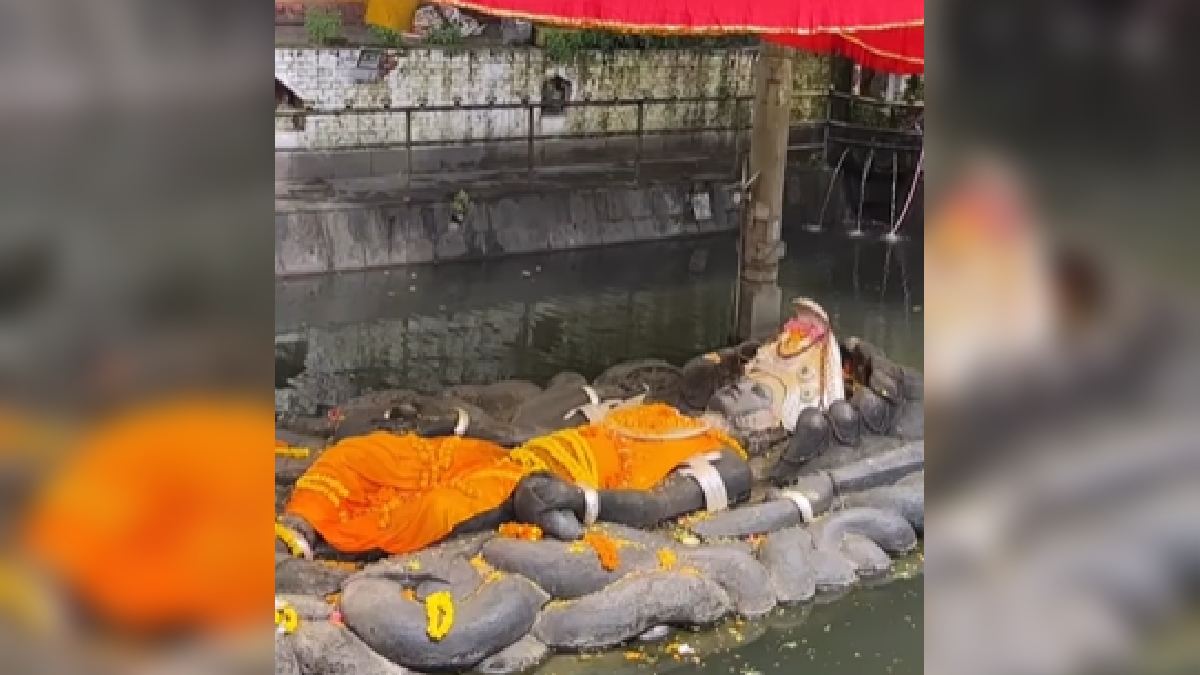Kathmandu: Nepal’s enigmatic Budhanilkantha Temple, nestled in the serene precincts of Budhanilkantha, offers a profound spiritual experience. Also known as the Narayanthan Temple, it boasts a massive reclining statue of Lord Mahavishnu, beckoning devotees from far and wide.
Spiritual symbolism and origins
Budhanilkantha’s nomenclature has occasionally led some to erroneously associate it with Gautama Buddha due to phonetic similarities. However, the temple’s name, “Old Blue Throat,” derives from a Sanskrit origin. It hails Lord Shiva, earning the title “Old Blue Throat” from the gods after he heroically consumed poison to safeguard the world. The statue within symbolizes Lord Vishnu, one of the revered “Trimurtis” alongside Brahma and Shiva.
Intriguing water source connection
The temple’s significance intertwines with the legend of Samudra Manthan in Hindu scriptures. This legend connects Budhanilkantha’s spring, feeding the temple pond, with Gosaikunda, making it directly associated with Lord Shiva. Although the statue venerates Lord Vishnu, the temple’s name pays homage to Lord Shiva, as the water source traces back to Gosaikunda—a result of Lord Shiva storing the poison in his throat, bestowing it with a blue hue.
A testament to religious harmony
Budhanilkantha Temple, while sacred to Hindus, also enjoys reverence from Buddhists, who regard the murti (statue) as Buddha. This interfaith respect reflects the enduring religious harmony of the region.
Location and features of the Old Blue Throat
Situated at the northern end of the Kathmandu Valley beneath Shivapuri Hill, Budhanilkantha Temple graces the Budhanilkantha Municipality of Kathmandu District. It stands as an architectural marvel carved from a single block of black basalt stone. The awe-inspiring statue of Lord Vishnu measures an impressive 5 meters (approximately 16.4 feet) in height, poised in the center of a serene pool spanning 13 meters (about 42.65 feet). Adorned with the Sudarshana Chakra, Club, Conch Shell, and a gem in his four hands, the deity wears a crown embellished with Kirtimukha images, sometimes overlapped by a silver crown. This ancient marvel, estimated to be over 1400 years old, boasts the title of Nepal’s largest stone carving.
View this post on Instagram
Vibrant festivals and rituals
Budhanilkantha Temple springs to life during the annual Haribondhini Ekadashi Mela, celebrated on the 11th day of the Hindu month of Kartika (October–November). This ritual awakens Lord Vishnu from his deep slumber, drawing thousands of pilgrims. The temple precincts host grand fairs during auspicious occasions such as Ekadashis, Harishayani, and Haribodhini in the Hindu lunar calendar, marking Lord Vishnu’s four-month restful period.
The enigmatic prophecy
Stories reveal that King Pratap Malla (1641–1674) had a prophetic vision, foretelling a curse for any king visiting the temple. Believing the prophecy, subsequent Nepalese monarchs, including King Pratap Malla, refrained from setting foot in the Budhanilkantha Temple, fearing a premature demise.










